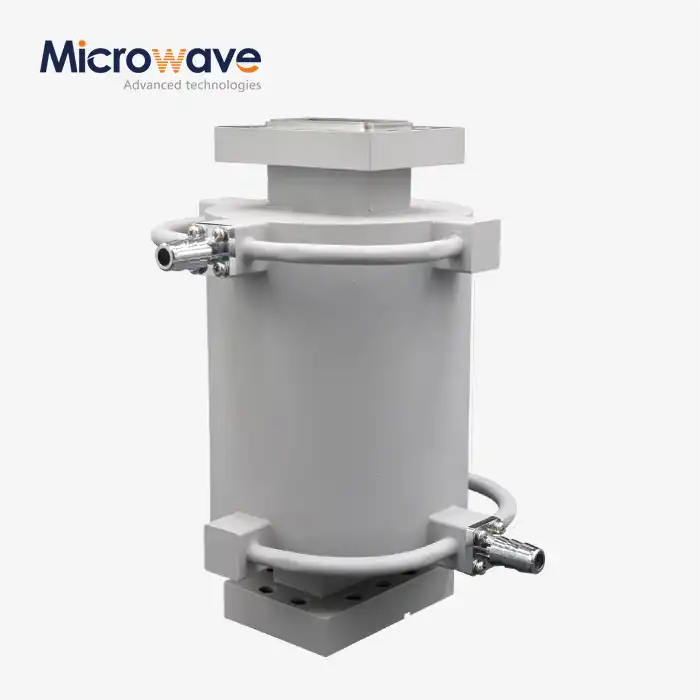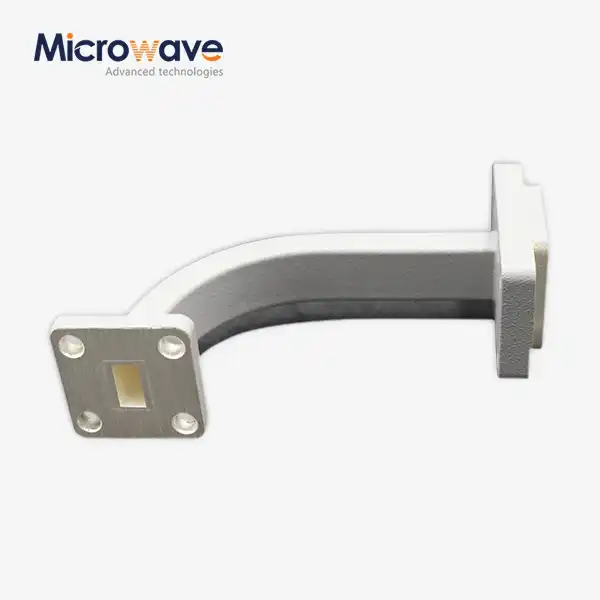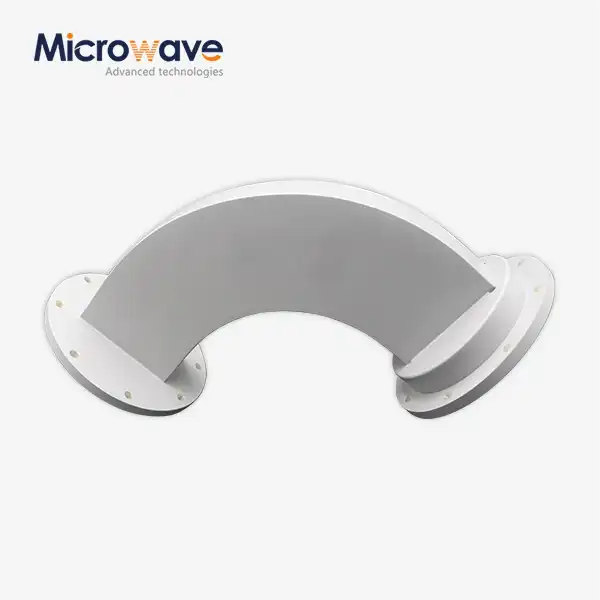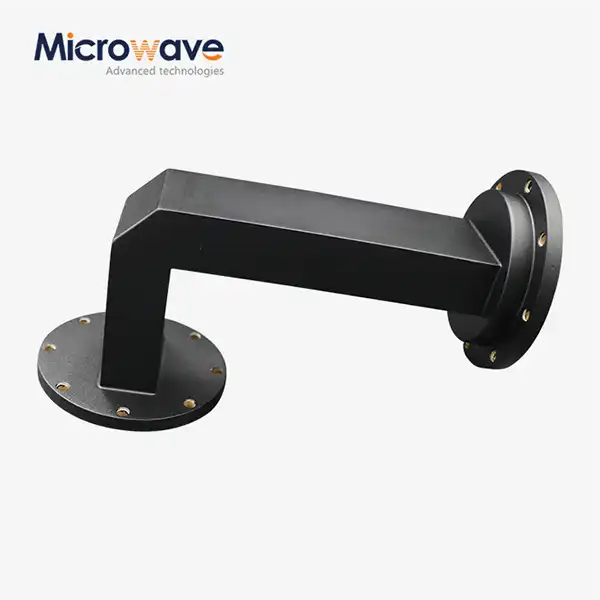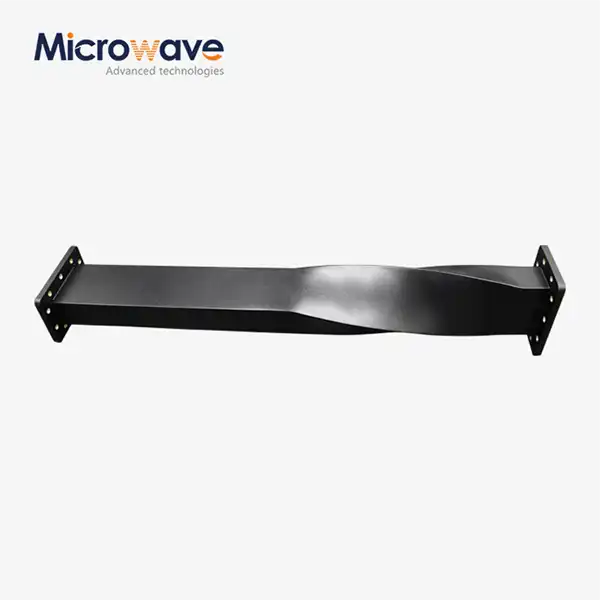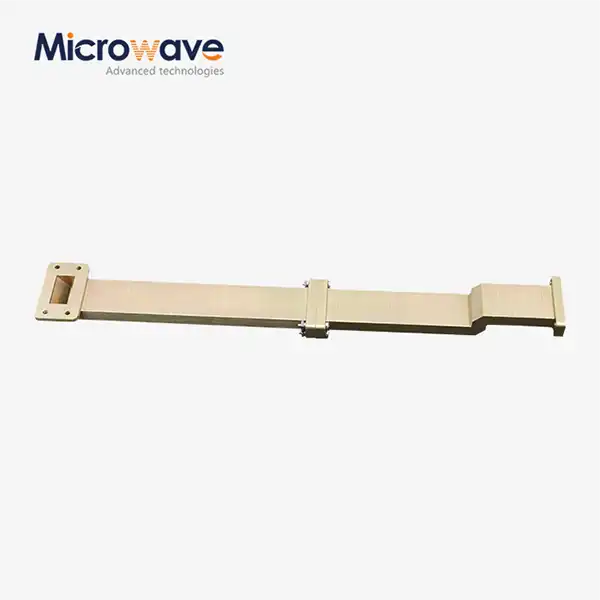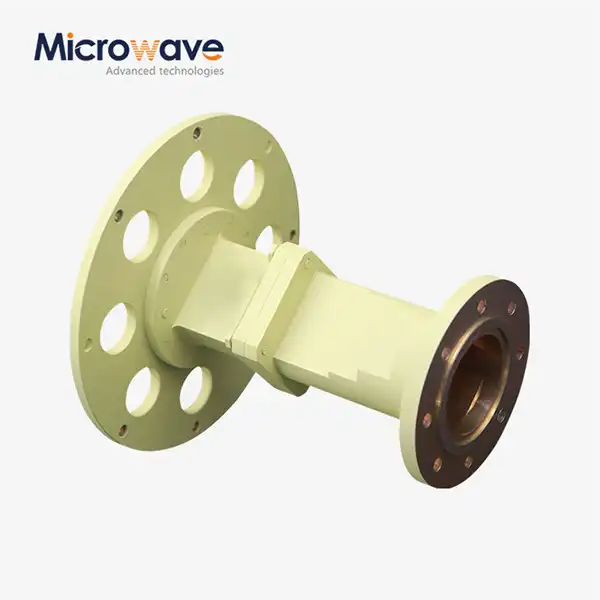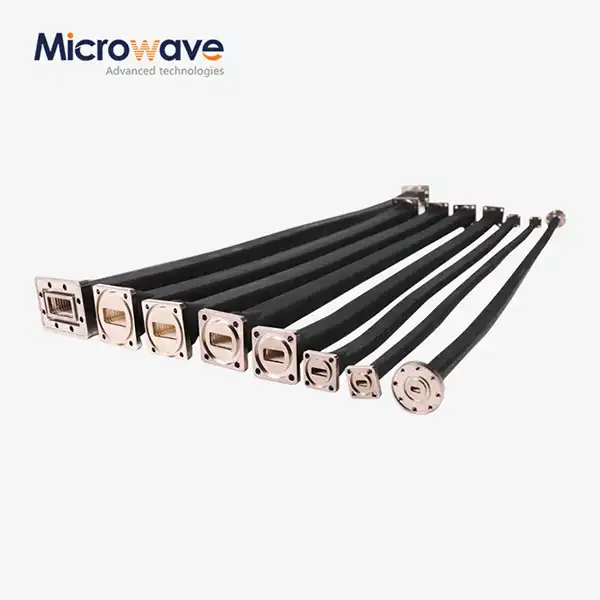What is a Waveguide Miter Bend?
Waveguide Miter Bends are essential components for routing microwave signals in a variety of systems, including satellite communication, radar, and aerospace applications. These specialized waveguide sections allow for efficient redirection of electromagnetic waves without compromising signal integrity, making them indispensable for modern high-frequency operations. A Waveguide Miter Bend consists of a carefully engineered corner section that enables the waveguide path to change direction, typically at a 90-degree angle, though other angles are possible through customization. The precision engineering behind these components ensures minimal signal loss and reflection, maintaining the performance of the entire microwave system even as signals navigate complex routing requirements in tight spaces.
Fundamental Principles of Waveguide Miter Bends
Understanding the fundamental principles behind Waveguide Miter Bends is essential for appreciating their role in microwave systems. These components represent a sophisticated solution to the challenge of changing the direction of electromagnetic wave propagation while preserving signal quality.
Design Mechanics and Signal Propagation
Waveguide Miter Bends operate on the principle of controlled reflection of electromagnetic waves. When a waveguide path needs to change direction, the miter bend utilizes a precisely angled reflective surface that redirects the microwave signals with minimal distortion. This reflective section is carefully designed to maintain the electromagnetic field pattern within the waveguide, ensuring that the mode of propagation remains constant throughout the bend. The geometry of a Waveguide Miter Bend is critical – its dimensions must be precisely calculated based on the wavelength of the signals being transmitted to prevent unwanted reflection patterns or mode conversions. At Advanced Microwave Technologies, our engineering team employs sophisticated simulation tools to optimize each bend's internal geometry, achieving the perfect balance between compact design and signal performance across frequency ranges up to 110 GHz.
Materials and Construction Technologies
The performance of Waveguide Miter Bends is heavily influenced by the materials used in their construction. Advanced Microwave manufactures these components using various high-quality materials including aluminum for lightweight applications, copper for superior conductivity, and brass for excellent machinability and durability. The selection of material depends on the specific application requirements, operating frequency, and environmental conditions. The manufacturing process involves precision machining to achieve tight tolerances, ensuring perfect alignment of waveguide sections. The interior surfaces of the Waveguide Miter Bend require exceptional smoothness to minimize signal loss due to surface resistivity. Our production facilities implement specialized techniques including electrical discharge machining and computer-numerical-controlled milling to achieve the required precision, followed by RoHS-compliant plating processes that include silver and gold finishes for enhanced conductivity and corrosion resistance.
Performance Parameters and Specifications
The effectiveness of a Waveguide Miter Bend is measured through several key performance parameters. The most critical among these is the Voltage Standing Wave Ratio (VSWR), which quantifies the impedance matching quality of the component. Advanced Microwave's Waveguide Miter Bends achieve a VSWR of ≤ 1.05, indicating exceptional signal transmission with minimal reflections. Another important specification is the insertion loss, which measures the amount of signal power lost when passing through the bend. Our engineering design minimizes this loss through precise dimensional control and superior material selection. Waveguide Miter Bends must also maintain their performance across their specified operating temperature range, which for our products extends from -40°C to +85°C, ensuring reliability in diverse environmental conditions. These performance specifications are verified through rigorous testing in our laboratories, which are equipped with advanced microwave measurement equipment capable of characterizing components up to 110 GHz, guaranteeing that each Waveguide Miter Bend meets our strict quality standards before reaching our customers.
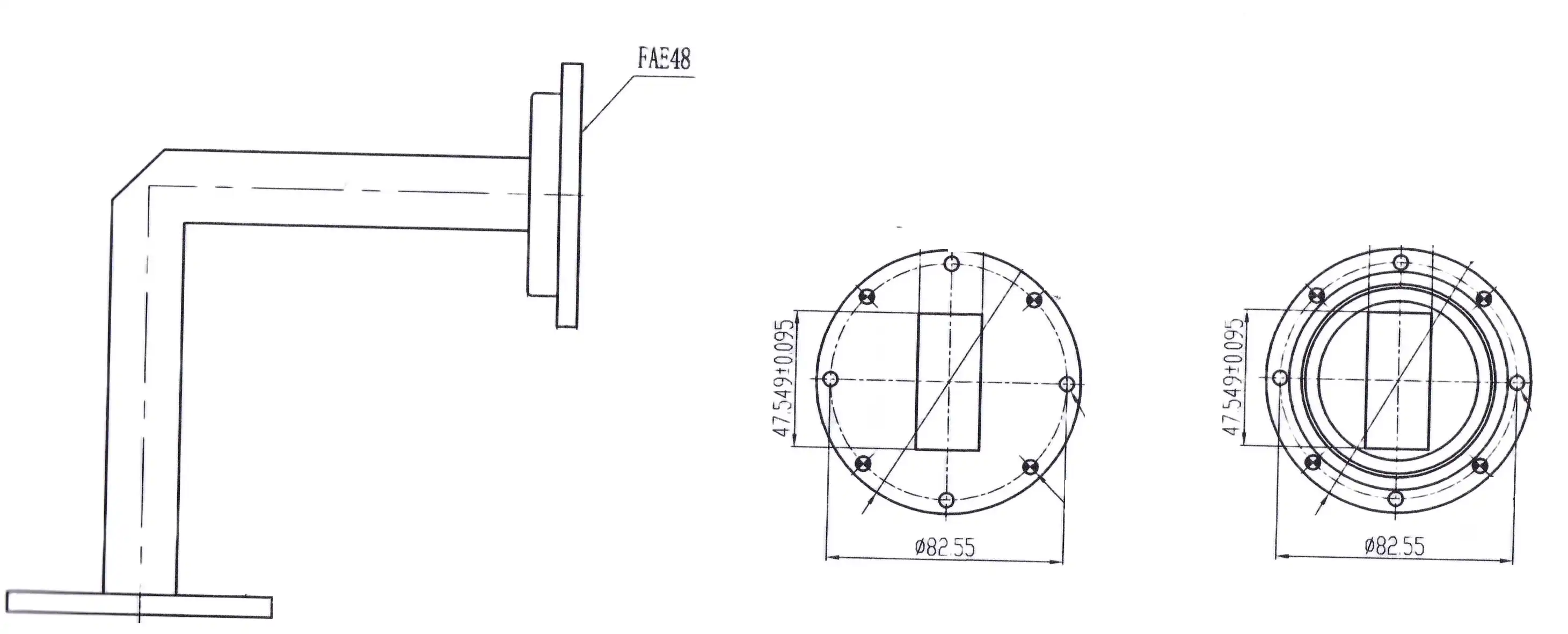
Applications and Implementation of Waveguide Miter Bends
Waveguide Miter Bends find extensive use across various high-frequency systems where signal integrity and space constraints are critical considerations. Their ability to efficiently redirect microwave signals makes them invaluable components in numerous industries.
Satellite Communication Systems
In satellite communication infrastructure, Waveguide Miter Bends play a crucial role in signal routing within both ground stations and satellite transponders. These components enable engineers to design compact feed systems that efficiently transfer signals between antennas and processing equipment while maintaining signal quality. The lightweight yet durable construction of Advanced Microwave's Waveguide Miter Bends makes them particularly suitable for space applications where every gram matters. Our bends are engineered to withstand the harsh conditions of space, including vacuum environments and extreme temperature fluctuations. The precision manufacturing ensures that signal integrity is maintained throughout the satellite's operational lifetime, which is essential for reliable communication links. The customizable nature of our Waveguide Miter Bends allows satellite system designers to optimize their waveguide networks for specific frequency bands ranging from C-band through Ka-band and beyond, accommodating the diverse requirements of modern satellite communication systems including high-throughput satellites, VSAT networks, and military communication satellites.
Radar and Defense Applications
Radar systems rely heavily on Waveguide Miter Bends for efficient signal routing within their complex architectures. These bends enable radar designers to create compact transmitter and receiver assemblies while maintaining the precise phase relationships critical for accurate target detection and tracking. In defense applications, where reliability under extreme conditions is paramount, Advanced Microwave's Waveguide Miter Bends provide the necessary durability and performance stability. Our components are manufactured to military-grade specifications, ensuring they can withstand the rigors of deployment in naval vessels, aircraft, and ground-based defense systems. The low VSWR characteristics of our Waveguide Miter Bends are particularly important in radar applications, as any signal reflections can create ghost targets or reduce detection range. By maintaining signal integrity throughout the waveguide network, our miter bends contribute to enhanced radar performance, enabling more accurate detection, better resolution, and improved clutter rejection capabilities in modern surveillance, weather, and targeting radar systems deployed for both civilian and defense purposes.
Test and Measurement Equipment
Precision test and measurement equipment requires high-performance Waveguide Miter Bends to ensure accurate characterization of microwave devices and systems. In network analyzers, signal generators, and other microwave test equipment, these bends allow for flexible connection configurations while maintaining calibration accuracy. Advanced Microwave Technologies provides specialized Waveguide Miter Bends specifically designed for metrology applications, featuring enhanced stability and exceptional repeatability characteristics. Our test-grade components undergo additional quality control steps to verify their performance consistency, making them ideal for calibration standards and reference fixtures. The ability to customize Waveguide Miter Bends for specific test setups allows engineers to create optimized measurement systems for characterizing complex microwave components. This customization capability includes non-standard bend angles, specialized flanges, and integration with other waveguide components such as twists, transitions, and attenuators. By providing high-quality measurement-grade Waveguide Miter Bends, Advanced Microwave Technologies contributes to the advancement of microwave engineering by enabling more accurate characterization of next-generation components and systems, supporting research and development efforts across industries from telecommunications to quantum computing.
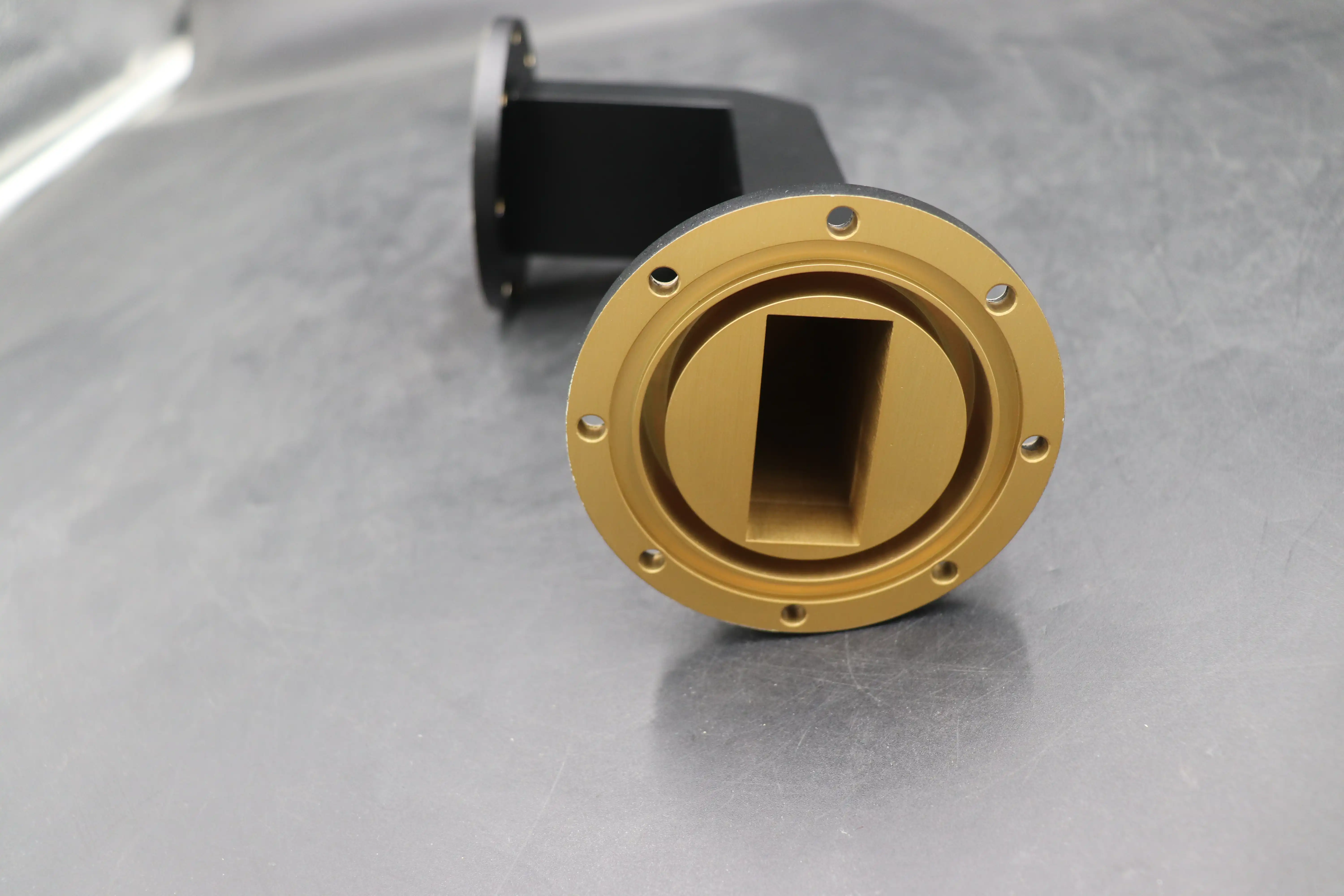
Design Considerations and Selection Criteria
Selecting the appropriate Waveguide Miter Bend for a specific application requires careful consideration of various factors that affect performance, integration, and long-term reliability. Engineers must evaluate these aspects to ensure optimal system operation.
Frequency Band and Waveguide Size Selection
The primary consideration when selecting a Waveguide Miter Bend is matching the frequency requirements of the application with the appropriate waveguide size. Advanced Microwave Technologies offers bends covering a comprehensive range of waveguide sizes from WR10 to WR2300, supporting frequencies up to 110 GHz. Each waveguide size has a specific operating frequency band in which it performs optimally, providing low loss and single-mode propagation. Selecting an appropriately sized Waveguide Miter Bend ensures that the system operates within the waveguide's recommended frequency range, avoiding higher-order modes that can degrade performance. Our engineering team assists customers in identifying the optimal waveguide dimensions based on their specific frequency requirements, bandwidth needs, and power handling capabilities. For narrowband applications, such as those found in precision test equipment or specialized communication links, Waveguide Miter Bends can be further optimized to deliver enhanced performance within a limited frequency range, achieving even lower insertion loss and VSWR. This frequency-specific optimization process involves fine-tuning the internal geometry of the bend to achieve ideal phase and amplitude characteristics at the target frequencies.
Environmental and Mechanical Considerations
The operating environment significantly impacts the selection of appropriate materials and finishes for Waveguide Miter Bends. In high-humidity or outdoor installations, corrosion resistance becomes critical, making the choice of plating or material crucial for long-term reliability. Advanced Microwave's Waveguide Miter Bends can be manufactured with various finishes and materials to withstand challenging environments, from silver plating for optimal conductivity to specialized coatings for extreme conditions. Mechanical factors such as mounting orientation, vibration exposure, and thermal expansion must also be considered. Our product line includes Waveguide Miter Bends designed for aerospace applications where lightweight aluminum construction reduces payload weight while maintaining mechanical stability. For high-power applications where thermal management becomes critical, copper or brass constructions offer superior heat dissipation capabilities. The mechanical interface between the Waveguide Miter Bend and connecting components requires careful attention to ensure proper alignment and secure connections. Our manufacturing processes ensure precise flange dimensions and compatibility with standard waveguide interfaces, allowing for straightforward integration into existing systems while maintaining the pressure integrity required for pressurized waveguide systems commonly used in high-altitude or space applications.
Custom Design Requirements and Optimization
While standard 90-degree Waveguide Miter Bends satisfy many application requirements, some systems benefit from customized solutions tailored to specific needs. Advanced Microwave Technologies specializes in developing custom Waveguide Miter Bends featuring non-standard angles, specialized flange types, or integrated components that combine multiple functions into a single unit. Our engineering team collaborates closely with customers to understand their unique requirements and constraints, developing optimized solutions that enhance system performance while simplifying integration. For complex waveguide networks found in advanced radar or satellite systems, custom-designed Waveguide Miter Bends can incorporate special features such as alignment pins, integrated pressure windows, or tuning elements that enable fine adjustment after installation. The optimization process involves sophisticated electromagnetic simulation techniques that model the component's behavior across its intended frequency range, identifying potential issues before manufacturing begins. This simulation-driven approach allows our engineers to explore innovative internal geometries that minimize insertion loss while maintaining excellent return loss characteristics. By developing application-specific Waveguide Miter Bends, Advanced Microwave Technologies helps customers achieve optimal system performance even in the most challenging design scenarios, providing solutions that perfectly balance electrical performance, mechanical constraints, and manufacturing feasibility.
Conclusion
Waveguide Miter Bends represent a critical component in modern microwave systems, enabling efficient signal routing while maintaining electromagnetic integrity. Their precision engineering and careful design make them indispensable for applications ranging from satellite communications to defense systems, where performance and reliability cannot be compromised.
At Advanced Microwave Technologies Co., Ltd., we bring over 20 years of expertise to the design and manufacture of superior Waveguide Miter Bends. Our perfect supply chain system, professional R&D team, and strict quality control processes ensure products that exceed expectations. Whether you need standard components or custom solutions for your most challenging applications, we deliver excellence at competitive prices with fast turnaround times. Experience the ADM advantage for your next project by contacting our team at sales@admicrowave.com – where innovation meets reliability in every component we create.
References
1. Johnson, R.C. & Jasik, H. (2018). Antenna Engineering Handbook. McGraw-Hill Education.
2. Pozar, D.M. (2022). Microwave Engineering, 5th Edition. John Wiley & Sons.
3. Collin, R.E. (2019). Foundations for Microwave Engineering. Wiley-IEEE Press.
4. Marcuvitz, N. (2018). Waveguide Handbook. Institution of Engineering and Technology.
5. Balanis, C.A. (2020). Advanced Engineering Electromagnetics. John Wiley & Sons.
6. Matthaei, G.L., Young, L. & Jones, E.M.T. (2021). Microwave Filters, Impedance-Matching Networks, and Coupling Structures. Artech House.




